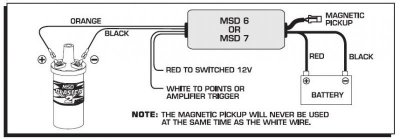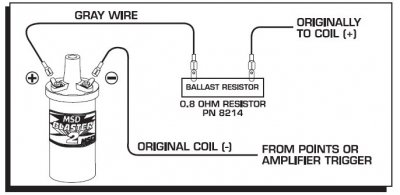dodge68charger
Well-Known Member
Is their a certain ballast resistor i need for my car, i got the builder to put a pertronix setup in the distributor. I see there is one for points n electronic ignition. Thanks
So it turns out i dont beed a resistor. Has anyone bypassed the resistor and still keeped it on the firewall. Heard you can run a wire through it
I used the Pertronix III with their FlameThrower III coil. I left the ballast resistor in place, just moved the feed to the coil to the other side of the ballast resistor, where it has full 12V all the time. Worked perfectly.So it turns out i dont beed a resistor. Has anyone bypassed the resistor and still keeped it on the firewall. Heard you can run a wire through it
.... will this work with a MSD Blaster 2 coil also ? I am asking, because I have this coil and a MSD Ready to run Distributor.... and I am
not sure, if I need the BR...or not.... called MSD they say : I don´t need the resistor....but the instruction sheet says I need the Resistor.... Confused
Greetings Juergen


that looks interesting ! In my manual there is no BR ! Where did you find this diagram ?
If the manual says no BR then I wouldn't use a BR. You get more power to the spark without the BR.that looks interesting ! In my manual there is no BR ! Where did you find this diagram ?
